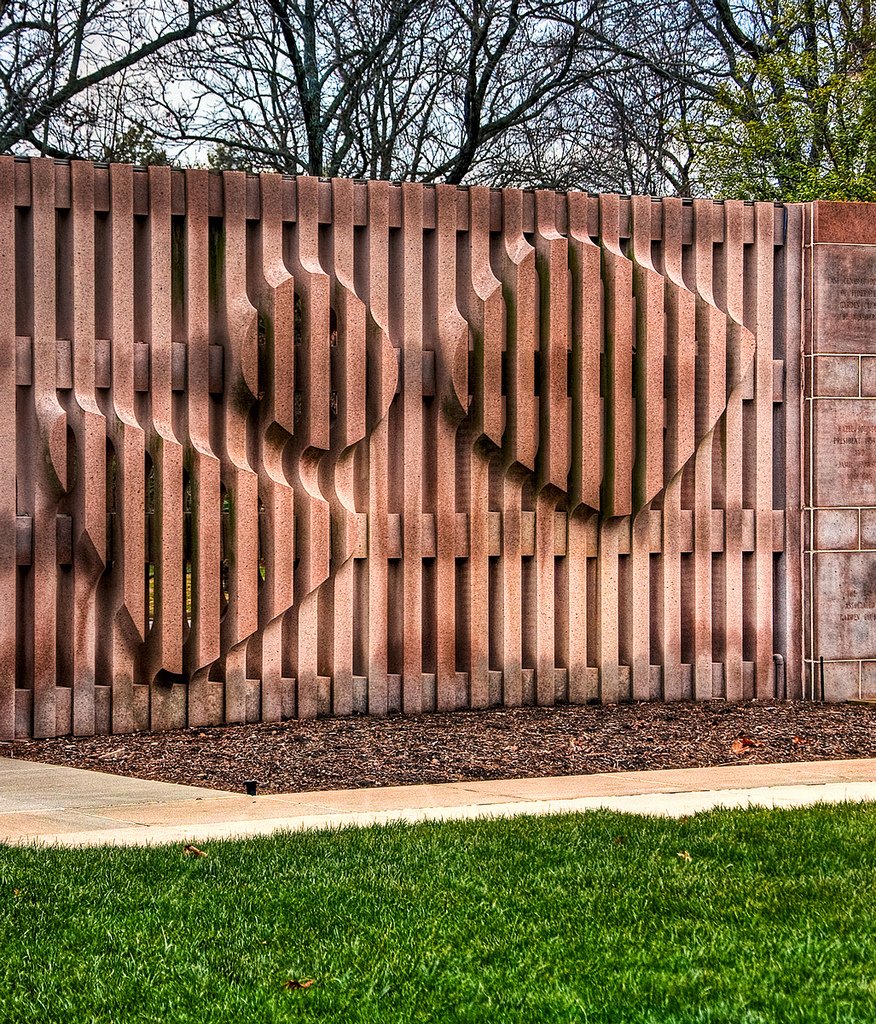#1203. Relief Facade with Optical Illusion: A Stone Symphony of Depth
Before us is an impressive example of modern architectural plasticity — a stone wall executed in the technique of volumetric relief. The facade is created from vertical strips of reddish granite or sandstone, arranged in an even rhythm. The distinctive feature of the composition is the ingenious play with depth — the vertical elements are carved in such a way that they form a geometric pattern resembling a heart when viewed from a certain angle.
Technically, the facade represents a masterful execution of the idea of optical illusion in stone. Each vertical element has a complex form with variable depth, creating a three-dimensional effect. The texture of natural stone with its warm reddish-brown hue adds additional expressiveness to the composition, especially in contrast with the surrounding greenery and the light pathway at its base.
The wall is likely part of a memorial complex or public space, as evidenced by the text panels on the right, which presumably contain explanatory information. This is a striking example of how contemporary architecture uses traditional materials to create emotionally expressive, conceptually rich objects that interact with the viewer on both visual and emotional levels.
